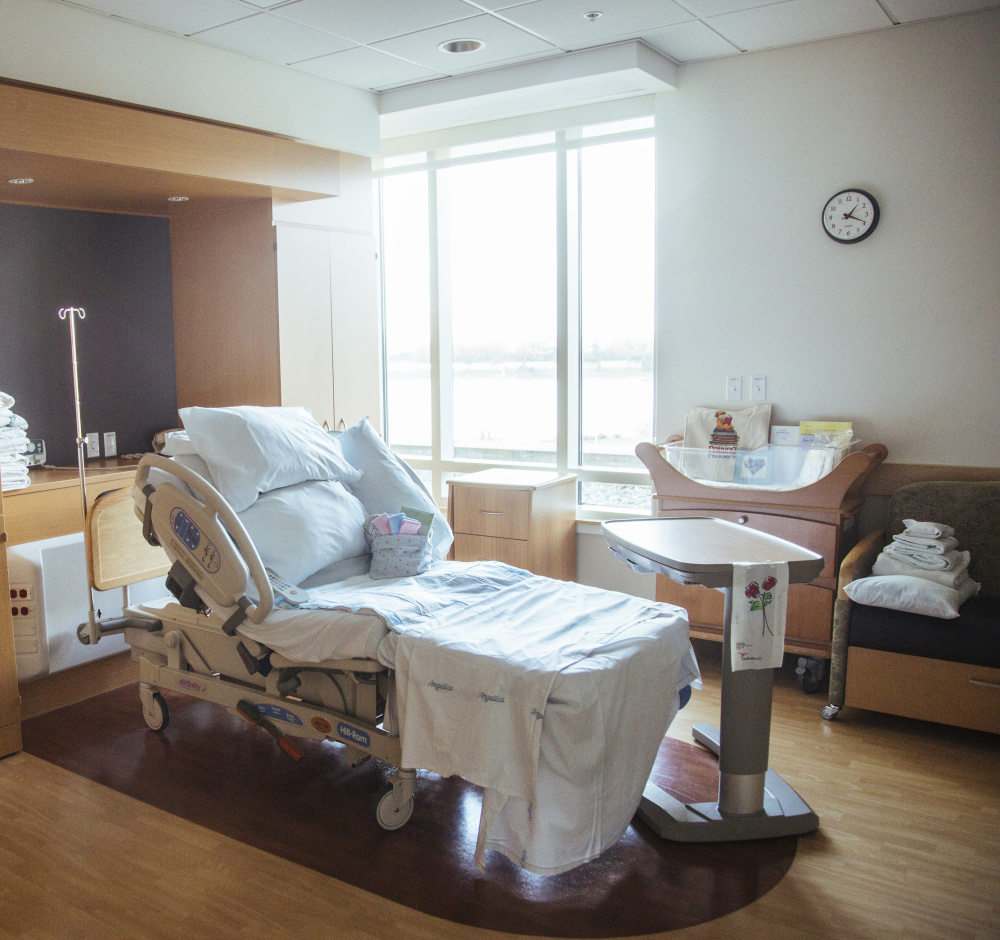Expectant parents often tour hospital maternity wings before choosing where to have a baby. Now, patients can more easily factor in what it will mean for their pocketbook, thanks to a new state website that lists the prices for dozens of common medical procedures, including delivering a baby.
The comparemaine.org website, launched this week, is the state’s latest medical cost transparency tool. Paid for by a $3.7 million federal grant, the website was created by the Maine Health Data Organization. The independent state agency tasked with making patient costs more accessible had a previous website that wasn’t nearly as user-friendly.
Karynlee Harrington, the organization’s executive director, said Maine is a leader in making health care costs transparent and the aim is to make the site as consumer-friendly as possible. The website also compares health care providers on quality measures – such as patient satisfaction and infection rates. Next year, it will be expanded to include more cost comparisons.
National research on the topic shows that Maine is among a handful of states, including New Hampshire, Massachusetts and Virginia, that provide meaningful price transparency on medical costs, according to a 2014 Health Care Incentives Improvement Institute report.
“People want to know what their options are,” Harrington said. “It’s one tool in the toolbox, and it will allow patients to have informed discussions with their doctors.”
The cost of having a baby varies widely across the state, from a low of $5,402 at Rumford Hospital to $13,428 at Maine Medical Center.
At Maine Med, the average cost of having a vaginally delivered baby is substantially more than a few blocks away at Mercy Hospital, where the average cost was $10,312. For C-section deliveries, Maine Med’s average delivery cost is $22,918 versus $13,826 at Mercy.
Experts caution, however, that the average cost may not represent what consumers will pay, which will vary depending on the total cost of the procedure, how much their insurance pays, and complications that can occur and add to the final bill.
And Maine Med officials point out that the “average” patient is different for each hospital.
“The problem with an average is that not all average patients are the same,” said Lugene Inzana, senior vice president for finance at Maine Med.
Inzana said because Maine Med has an intensive care unit for newborns and Mercy doesn’t, higher-risk pregnancies, which are more costly, end up at Maine Med, driving up their average cost. “Maine Med attracts all of the most complicated deliveries in the state,” she said.
Still, for big-ticket items that can be planned for in advance – such as having a baby, or a knee or hip replacement – the site can be useful in estimating what an out-of-pocket cost might look like, preventing sticker shock while recovering from the operation.
“We invite these conversations. These are conversations we want to be having with our patients,” Inzana said.
Depending on a patient’s deductible and copays, savings could range from several hundred dollars on basic procedures to $1,000 or more for complex operations.
According to an April 2014 study by the Robert Wood Johnson Foundation that looked at New Hampshire’s health care transparency tool, the website there did affect health care pricing. While the study said the results were “modest,” it did note that giving consumers the ability to compare prices encouraged health care providers to compete on price, and insurance companies to be more creative in the types of health plans offered, to limit out-of-pocket costs.
It also may prompt patients to start doing more price-shopping for medical procedures, experts say.
One of the most common ways for hospitals to compete and gain customer loyalty is with their maternity wards, according to numerous news articles.
When Mercy put the finishing touches on its Fore River complex eight years ago, The Birthplace maternity ward was a major part of the complex. Moms have spacious rooms, with jacuzzi tubs and fold-out beds for dads. Lactation consultations and many nurses are on hand to help new moms. The moms don’t have to switch rooms after delivery.
“We do glorified home births,” said Tina Payne, nurse-manager at Mercy Hospital. “We do low-intervention births, but intervention is there if we need it. We ask the moms what they want us to do, each step of the way.”
Payne said expectant moms and dads typically want to know about rates of C-sections, induced labor, epidurals to control pain and breastfeeding.
Dr. Katie Ozarowski, a pediatrician, didn’t factor in costs when deciding where to have her first child nearly two years ago, although the website was not available then. She chose Mercy Hospital after touring The Birthplace.
“When we were thinking about where to have a baby, we wanted atmosphere and experience,” said Ozarowski, who is seven months pregnant with her second child. Ozarowski was hired as a Mercy pediatrician a few weeks ago, but was not employed by the hospital when her first child was born. “I wanted it to be as intimate an experience as possible without it being a home birth.”
Emily Brostek, executive director for Consumers for Affordable Health Care, a nonprofit advocacy group in Augusta, said the new website is an important step forward in price transparency.
“Everyone who has ever tried to find out how much health care is going to cost them has always found it to be very challenging,” Brostek said. “By making the data public, it might push health care providers to be more competitive with their pricing.
“But it’s not like buying a TV on Amazon, and I don’t want to be bargain basement hunting for my health care.”
Send questions/comments to the editors.




Comments are no longer available on this story